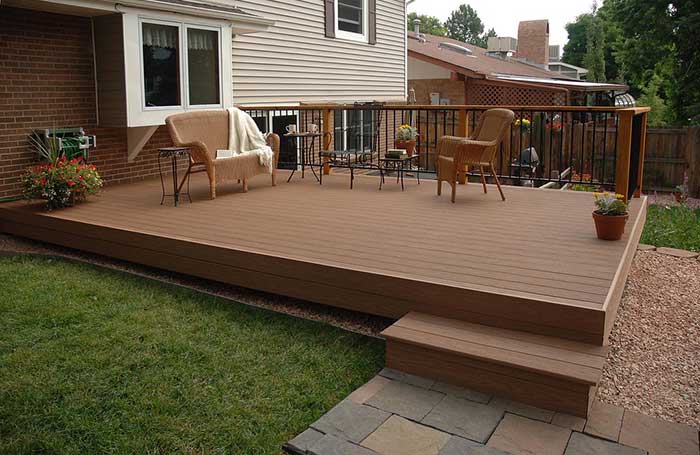The Ultimate Guide to Choosing Composite Decking Materials

In outdoor living spaces, composite decking has emerged as a popular choice for homeowners looking to enhance their homes with durable and aesthetically pleasing decks. If you’re considering composite decking for your next project, navigating the myriad options can be overwhelming. That’s why we’ve put together this ultimate guide to help you choose the perfect composite decking materials for your needs.
Table of Contents
1. Understanding Composite Decking Materials
Composite decking blends wood fibers, plastic, and sometimes other materials like bamboo or fiberglass. This combination results in a sturdy and low-maintenance alternative to traditional wood decking. With advancements in technology, composite decking now offers a wide range of textures, colors, and finishes, mimicking the look of real wood without the drawbacks.
What is Composite Decking?:
Composite decking is a man-made building material with various components designed to withstand the elements and provide long-lasting performance.
Advantages of Composite Decking: From durability and longevity to resistance to rot, mold, and insects, composite decking offers several advantages over traditional wood decking.
Types of Composite Decking Materials: Composite decking comes in different types, including capped composite, uncapped composite, and PVC decking, each with unique features and benefits.
2. Factors to Consider When Choosing Composite Decking
Before diving into your composite decking project, it’s essential to consider various factors to ensure you select the right materials for your specific needs.
Durability and Longevity:
Look for composite decking with superior durability and a long lifespan to withstand heavy foot traffic and harsh weather conditions.
Maintenance Requirements:
Determine the level of maintenance you’re willing to commit to. While composite decking requires less maintenance than wood, some varieties may require periodic cleaning or sealing.
Aesthetic Appeal and Design Options:
Explore the wide range of colors, textures, and finishes in composite decking to find the perfect match for your home’s exterior design.
3. Evaluating Environmental Impact
In recent years, environmental consciousness has become increasingly important in various industries, including construction and home improvement. When it comes to decking materials, evaluating their environmental impact involves considering factors such as the sustainability of raw materials, recyclability, and overall carbon footprint.
Sustainability of Materials
Composite decking materials typically blend wood fibers, recycled plastics, and sometimes other additives. When assessing sustainability, it’s essential to consider the source of these materials. Opting for composite decking made from responsibly sourced wood fibers and recycled plastics helps minimize the depletion of natural resources. It reduces the environmental impact associated with deforestation and plastic waste.
Furthermore, some manufacturers prioritize using renewable resources, such as bamboo, in their composite decking products. Bamboo is known for its rapid growth rate and sustainability, making it an eco-friendly alternative to traditional wood fibers.
Recyclability and Eco-Friendly Options
One of the significant advantages of composite decking is its potential for recyclability. While traditional wood decking may end up in landfills at the end of its lifespan, many composite decking products are recyclable, contributing to a more circular economy.
Carbon Footprint Comparison
Assessing the carbon footprint of composite decking involves examining the environmental impact throughout its lifecycle, from raw material extraction and manufacturing to transportation and disposal. Manufacturers that prioritize energy-efficient production processes utilize renewable energy sources and minimize emissions contribute to lower carbon footprints for their products.
Comparing the carbon footprints of different composite decking options allows consumers to make informed choices based on environmental considerations. Life cycle assessments (LCAs) can provide valuable insights into the environmental impact of various decking materials, helping consumers prioritize sustainability in their decision-making process.
By evaluating the environmental impact of composite decking materials based on sustainability, recyclability, and carbon footprint, consumers can make environmentally responsible choices that contribute to a greener future. Investing in sustainable decking materials benefits the environment and enhances the long-term value and enjoyment of outdoor living spaces.
4. Budgeting and Cost Considerations
While composite decking tends to have a higher upfront cost than wood, it’s essential to consider your investment’s long-term savings and overall value.
Initial Costs vs. Long-Term Savings:
Evaluate the upfront cost of composite decking against its durability and low maintenance requirements, which can result in significant long-term savings.
Installation Expenses:
Factor in the composite decking installation cost, including labor and any additional materials required for framing and support.
Cost of Maintenance and Repairs:
Compare the cost of maintaining composite decking versus wood decking over time, considering factors like cleaning, sealing, and potential repairs.
5. Selecting the Right Composite Decking for Your Needs
Choosing the right composite decking can seem daunting with so many options. Here are some tips to help you narrow down your choices.
Assessing Your Usage and Lifestyle:
Consider how you plan to use your deck and lifestyle preferences to determine the best composite decking for your needs.
Climate and Weather Resistance:
Choose composite decking with excellent weather resistance and UV protection, especially if you live in an area prone to extreme temperatures or high humidity.
Comparing Brands and Product Reviews:
Research different brands and read product reviews to understand various composite decking options’ quality, performance, and customer satisfaction.
By considering these factors and researching, you can confidently choose the perfect composite decking materials for your outdoor space.
Contact Park Place Construction:
Whether you prioritize durability, sustainability, or aesthetics, a composite decking option exists to meet your needs and exceed your expectations. Invest in quality materials today and enjoy your beautiful, functional deck for years with Park Place Construction; call now at (443) 218-6841 and discover the ultimate composite decking options for your property.

